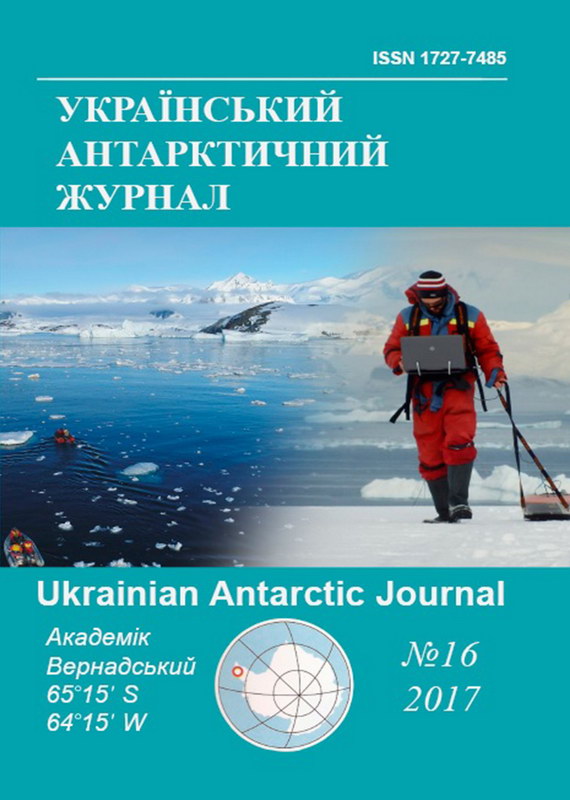From animal hibernation to human’s hypometabolism: cellular mechanisms of natural and artificial hypobiosis
- artificial and natural hypobiosis,
- mammals,
- decreased body temperature,
- erythrocyte,
- osmotic resistance
- hemoglobin forms,
- cytosol microviscosity ...More

This work is licensed under a Creative Commons Attribution-NonCommercial-NoDerivatives 4.0 International License.
Abstract
Objective: to carry out a comparative study of structural and functional responses of rats and hamsters RBCs when the animals entered and left an artificial hypobiosis state under conditions of hypothermia-hypoxia-hypercapnia. Methods: RBCs of rats and hamsters: control, in artificial hypobiotic state, 2 and 24 h post-hypobiosis state, and those from winter-hibernating hamsters were investigated. Osmotic resistance was determined by the method of small-angle light scattering. Relative content of main hemoglobin forms (oxy-, deoxy- and metHb) was determined by the method of differential spectrophotometry. Microviscosity of cytosol was evaluated within a range of 37-0°C by EPR spin probe method. Results: the artificial hypobiotic state was characterized by body temperature decreasing (down to 16°C), in the same way for both homoiothermal and heterothermal mammals. This was accompanied by changes of osmotic resistance, redistribution of main hemoglobin forms, cytosol microviscosity in RBCs. Increased osmotic resistance and significantly elevated relative content of oxyHb were revealed in 2 h after hypobiotic state. Modifications of the parameters kept changing up to 24 h post-hypobiotic-state. RBC responses to natural and artificial hypobiosis had common as well as different features. Difference in the reaction of RBC cytosol of homoiotherms and heterotherms, associated with the season, was found. Conclusions: RBCs response in vivo to physiological rearrangements induced by artificial hypobiosis of both heterotherm and homoiotherm mammals. The significant changes of the structural and functional state of erythrocyte kept changing up to 24 h post-hypobiotic-state, while the physiological state of the animals was similar to the control already in 2 hours after hypobiosis. Existence of mammals RBC “aftersensations” in posthypobiotic state allows to consider the model of artificial hypobiosis perspective for clarification of the cellular mechanisms of controlled induction of hypometabolic state.
References
- Aksyonova, G.E., Logvinovich, O.S., Fialkovskaya, L.A., Afanasyev, V.N., Ignat'ev, D.A., Kolomiytseva I.K. 2010. Ornithine Decarboxylase Activity in Rat Organs and Tissues under Artificial Hypobiosis. Biochemistry (Moscow), 75, 1126-1131. https://doi.org/10.1134/S0006297910090051.
- Andjus, R.K., Smith, A.U. 1955. Reanimation of adult rats from body temperature between 0 and +2C. J Physiol., 128, 446-472. https://doi.org/10.1113/jphysiol.1955.sp005318.
- Bradbury, J., 2001. How hibernators might one day solve medical problems. Lancet, 358, 1164. https://doi.org/10.1016/S0140-6736(01)06313-9.
- Campanella, M.E., Chu, H., Low, P.S. 2005. Assembly and regulation of a glycolytic enzyme complex on the human erythrocyte membrane. Proc Natl Acad Sci USA, 102, 2402-2407. https://doi.org/10.1073/pnas.0409741102.
- Colugnati, D.B., Arida, R.M., Cravo, S.L., Schoorlemmer, G.H., de Almeida, A.C., Cavalheiro, E.A., Scorza, F.A. 2008. Hibernating mammals in sudden cardiac death in epilepsy: What do they tell us? Med Hypotheses, 70, 929-932. https://doi.org/10.1016/j.mehy.2007.10.005.
- Dirkes, MC, Milstein, DM, Heger, M, van Gulik, TM. 2015. Absence of hydrogen sulfide-induced hypometabolism in pigs: a mechanistic explanation in relation to small nonhibernating mammals. Eur Surg Res., 54, 178-191. https://doi.org/10.1159/000369795.
- Forte, T., Leto, T.L., Minetti, M., Marchesi, V.T. 1985. Protein 4.1 is involved in a structural thermotropic transition of the RBC membrane, detected by a spin-labeled stearic acid. Biochemistry, 24, 7876-7880. https://doi.org/10.1021/bi00348a005.
- Gorr, TA. 2017. Hypometabolism as the ultimate defence in stress response: how the comparative approach helps understanding of medically relevant questions. Acta Physiol (Oxf), 219, 409-440. https://doi.org/10.1111/apha.12747.
- Green, C. 2000. Mammalian Hibernation - Lessons for Organ Preservation. Cryo Letters, 21, 91-98.
- Malatesta, M., Biggiogera, M., Zancanaro C. 2007. Hypometabolic induced state: a potential tool in biomedicine and space exploration. Rev. Environ. Sci. Biotechnol., 6, 47-60. https://doi.org/10.1007/s11157-006-9101-4.
- Manno, S., Takakuwa, Y., Mohandas, N. 2005. Modulation of erythrocyte membrane mechanical function by protein 4.1 phosphorylation. J Biol Chem., 280, 7581-7587. https://doi.org/10.1074/jbc.M410650200.
- Mel'nychuk, S.D., Mel'nychuk, D.O. 2007. Hypobiosis of animals (molecular mechanisms and practical value for agriculture and medicine). Kiev: NAU, 220.
- Mel'nychuk, S.D., Vykhovanets', V.I. 2005. Influence of conditions of artificial hibernation on energy metabolism indices in rats. Ukr Biokhim Zh., 77, 131-135.
- Minetti, M., Ceccarini, M., DiStassi, A.M.M. 1984. Characterization of thermotropic structural transitions of the erythrocyte membrane: a biochemical and electron-paramagnetic resonance approach. J Cell Biochem., 25, 73-86. https://doi.org/10.1002/jcb.240250203.
- Mullaney, P.F., Dean, P.N. 1970. The small angle light scattering of biological cells. Theoretical consideration. Biophys J., 10, 764-772. https://doi.org/10.1016/S0006-3495(70)86334-2.
- Repina, S.V., Repin, N.V. 1998. Erythrocyte membrane skeleton: a putative participator of adaptive cellular response to temperature variation. Cell Mol Biol Lett., 3, 196-197.
- Repina, S.V., Repin, N.V. 2008. Peculiarities of RBCs resistance to acid hemolysis in hibernating mammals. Bioelectrochemistry, 73, 106-109. https://doi.org/10.1016/j.bioelechem.2008.04.009.
- Scott, K. L., Lecak, J., Acker J. P. 2005. Biopreservation of Red Blood Cells: Past, Present, and Future. Transfus Med Rev., 19, 127-142. https://doi.org/10.1016/j.tmrv.2004.11.004.
- Storey KB, Storey JM. 2010. Metabolic rate depression: the biochemistry of mammalian hibernation. Adv Clin Chem., 52, 77-108. https://doi.org/10.1016/S0065-2423(10)52003-1.
- Willis, J.S., Ellory, J.C., Cossins, A.R. 1981. Membranes of mammalian hibernators at low temperatures. In: Morris, G.J., Clarke, A. (eds.), Effects of low temperatures on biological membranes. London, New York: Academic Press.
- Zwart, A., Buursma, A., van Kampen, E. A., Oesburg, B., van der Ploeg, P.H.W., Zijlstra, W.G. 1981. A multi- wavelength spectrophotometric method for the simultaneous determination of five haemoglobin derivatives. J Clin Chem Clin Biochem., 19, 457-463. https://doi.org/10.1515/cclm.1981.19.7.457.

